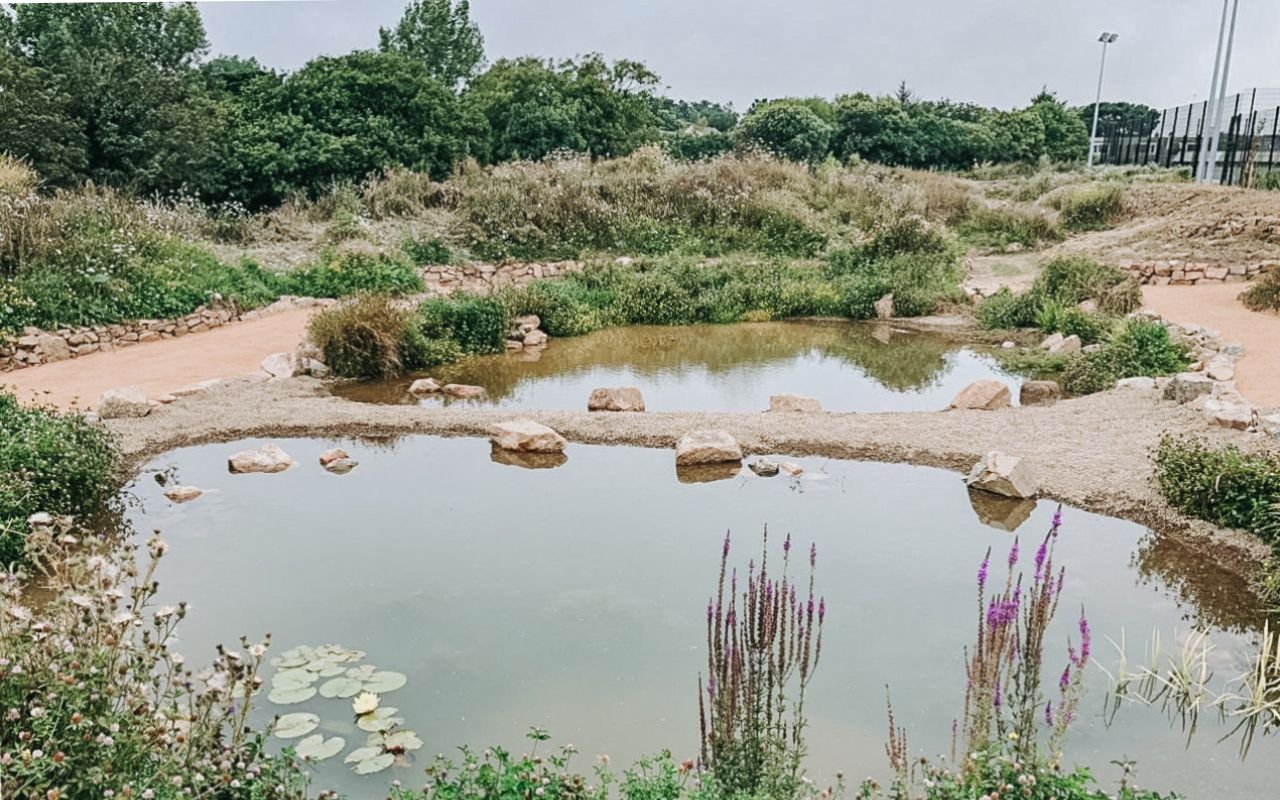Nude Dunes - St Ouen’s Bay
Project Area
Ecology & Habitats
Specialism
Protected Species & Habitat Creation
Year
2016 - 2023
Protected wildlife translocation and sand dune habitat creation. This site located within the Coastal National Park was to be converted from a public toilet block into a new beachside café. Our ecological surveys found high populations of reptiles (green lizards and slow worms) in the protected dune area below the café, which needed to be dug out in order to undertake the proposed development works.
We worked closely with the client and Land Resource Management Team to create a solution for the works that allowed development to continue without harming or destroying the protected animals found on site, and to recreate this protected habitat type in the long term.
Short-term mitigation
40 reptile mats were placed within the works area to attract any reptiles to the warm mats in the mornings to warm up (as this species group is cold blooded).
An exclusion fence was erected around the core development area, so that any animals translocated or flushed out of the works area could not return.
A two-phased trapping and translocation of reptiles (and any other protected wildlife) found within the works area / under our survey mats was undertaken, with animals placed over the exclusion fence into the suitable surrounding dune habitat.
A directional and phased vegetation cut was then undertaken to drive any remaining animals out of the works area.
These works were all undertaken in autumn (outside of the main breeding and hibernation period) to reduce any impacts to this species group during sensitive life-cycle stages.
A ‘tool-box talk’ was given to the appointed contractor for digging out the dunes, to ensure these works were done sensitively, and ecological supervision was given in areas where animals were found most frequently during surveys and translocation.
Long-term enhancement
The exclusion fence remained during the period of works to keep animals away from the works area.
Suitable sand from a donor site in the coastal zone of St Brelade’s Bay was imported to site to create undulating banks and low ‘dunes’, to make the area look as natural as possible and blend in with the surrounding landscape.
Log piles were incorporated into the landscaping to create additional suitable habitat for reptiles.
Once works were completed, the whole dune area was planted with over 4000 individual ‘plugs’ of marram grass, which is a natural ‘dune building’ grass found in St Ouen’s Bay.
Once planting was beginning to establish, the exclusion fence was removed and animals allowed to return to the area. Green lizards and slow worms have since been seen within this newly established dune area.
Highlight Projects

















